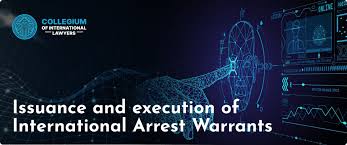The use of autopen technology by U.S. Presidents has sparked a significant controversy over the authenticity and integrity of executive orders. An autopen is a device used to replicate a person’s signature, allowing a president to sign documents quickly, especially when they are unable to do so in person. While this technology offers practicality, it raises philosophical and ethical questions about the authenticity of a president’s signature and, by extension, their authority. This is particularly evident when considering presidential autopen controversy executive orders and signature authenticity as matters of governance and public trust.
The controversy surrounding the presidential autopen began to gain traction in the late 20th century, as presidents increasingly faced the demands of a fast-paced political landscape. The autopen allows for the immediate signing of documents, thereby facilitating the governmental processes without delay. However, critics argue that reliance on such technology undermines the personal touch and accountability that should accompany executive actions.
One of the most significant events that brought the autopen into public discourse occurred during the Obama administration. President Barack Obama faced numerous situations where he signed important bills, executive orders, and other documents using an autopen while abroad. This raised questions about whether these signatures carried the same weight as those written by hand. Although the White House maintained that every autopen signature was authorized and legitimate, the debate over perceived authenticity persisted.
Supporters of the autopen argue that it is a necessary tool in an age where presidents are pulled in multiple directions and often find themselves away from the office due to diplomatic trips or other commitments. They contend that the speed at which decisions must be made justifies the use of such technology. Moreover, the legal and procedural frameworks surrounding executive orders remain firmly in place, and the use of an autopen does not alter the president’s authority to enact changes in policy.
Conversely, opponents assert that an autopen signature lacks the personal commitment that a handwritten signature represents. They argue that, in signing documents that can have significant implications for law and policy, a president should take the time to personally sign critical legislation and orders. This viewpoint suggests that the act of signing should be as intentional and personal as the decisions made in governance. Critics worry that over-reliance on technology may erode essential qualities of leadership, such as authenticity and transparency. The signature, after all, is often seen as a representation of the leader’s engagement with their duties and responsibilities.
The use of autopen technology also raises concerns about accountability, especially when significant decisions are made through it. If a president delegates the signing of critical documents to a machine, what implications does that have for their responsibility and liability in case of unforeseen consequences? This concern is amplified when considering issues of executive orders that can significantly alter the legal and economic landscape of the nation.
Moreover, the emergence of autopen technology brings about discussions surrounding the broader implications of technology in governance. In a world where deep fakes and artificial intelligence are on the rise, the authenticity of a leader’s signature comes into question more than ever. Can signatures made by machines be verified, and will they hold the same weight in the eyes of the law and the public? It leads to further inquiries about how technology both facilitates and complicates the relationship between leaders and their constituents.
The debate does not end with the question of authenticity; it extends to public perceptions of leadership and trust in government. When citizens feel that their leaders are not fully engaged in the decision-making process, it can result in disillusionment and a lack of confidence in governmental institutions. Trust is a cornerstone of effective leadership, and the manner in which a president signs their name is symbolic of their commitment to their responsibilities.
In conclusion, the presidential autopen controversy underscores a significant tension between practicality and authenticity in leadership. As technology continues to evolve, it is essential for public officials to navigate these challenges thoughtfully. Ensuring transparency, maintaining trust, and grappling with the philosophical implications of leadership in the digital age are crucial considerations for democracy. While autopen signatures may confer efficiency, the potential erosion of personal engagement and accountability in governance cannot be overlooked. Leaders must balance operational demands with the need to project authenticity, beginning with something as simple—and yet as profound—as their signature.




